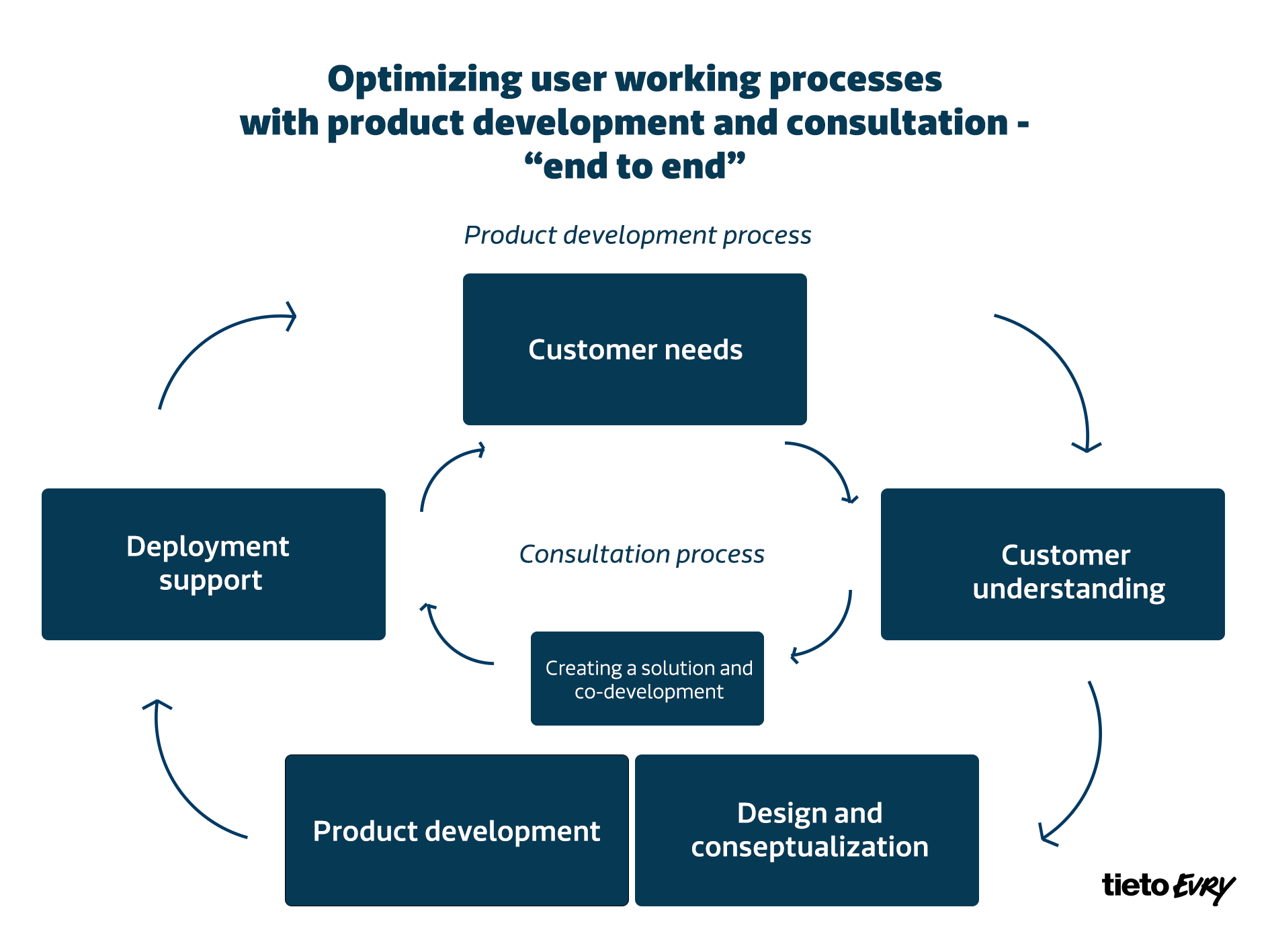TietoEVRY has adopted the popular method of user-centric design to drive healthcare development work. This approach involves users in the product design, from the very earliest stages right through the entire development process.
Customers’ needs drive development
Our product development is underpinned by customer needs: what new products or functionalities are needed, or should existing ones be developed? These decisions form the basis of early-stage conceptualization, helping us identify the needs, aspirations, or challenges associated with developing the product within the healthcare ecosystem. It also pinpoints areas of work that can be streamlined. This necessary information is collated during interviews and observational visits.
The wishes of our customers and the views of our healthcare process experts are gathered by our multi-professional development team so they can develop an appropriate product concept. Objectives are set for product development: what benefits will it offer, and what mechanisms will deliver these to the users. The concept design work continues in ideation until the answers that meet the goals and value promises are found.
Users are re-involved in the evaluation and validation of the concept with the developed prototype. This process is repeated several times, with user feedback driving product idea development. Actual production only commences after the conceptualization and validation process is completed. We also collect user feedback on the completed solution and carry out final usability testing.
Good deployment essential for success
A solution that is developed with user-centric design and methodology will only work if it is supported by tailored implementation and training. We are constantly developing our deployment and support services to ensure maximum results for the users.
At present, our investment focus is on the flow of information through the product development process: the information chain must remain unbroken from the start of the planning phase through to the optimal use of the product. This means our workflow experts are involved throughout the process; from design to deployment. More than ever before, our product management, product development and implementation support experts all work collaboratively.
Future-proofing user needs
The whole process of identifying a user need and introducing a new product or functionality can take between one and three years. This means we cannot just consider the issues of today, but we must understand and consider how these might change in the future.
However, there are times when operational changes are needed urgently, and the improvements made and implemented during product development have not been able to solve the problem quickly enough. When this happens, our expert consultants can help the client utilize existing solutions in new ways; is the system and its functionalities being used in an optimal way? Can new workflows be created? This approach gives our customers a quick solution to their challenge.
These processes both have common objectives and outcomes: to meet the customer’s needs, involve users in the design process, and ensure continuity. A well-managed development chain ensures the implementation of a new product or workflow will work seamlessly with previously developed work.

The Covid-19 pandemic has accelerated user-driven development
When the corona pandemic struck Finland in March, we quickly identified the needs of users, customers, and wider society alongside our own planning work. We redirected product development resources to corona-related issues, focused on the development of ideas, and accelerated the decision-making process. At its fastest, it took about a week for us to identify the need and release the solution. To make it easier for our customers to use and take advantage of the system quickly and effectively, we worked on creating a series of instructions alongside a swift release of new functionalities and products including Covid-19 diagnosis, isolation and quarantine forms, SMS services, and video appointments.
Customers play a key role
Actively engaged customers are the key to successful user-centric design. Users who are happy to participate in developing ideas and providing feedback are crucial to the approach. But this alone will not make the solutions work, there also needs to be a corporate culture which elevates and values the needs of the user and the customer.
We must continue to develop our understanding and knowledge of user-centred development methods. This should work together with our robust technology and user-friendly system architecture to enable user-centric product development. Successful deployment requires an understanding of and expertise in healthcare processes, as well as the ability to integrate new system functionalities with the customer’s existing operational processes. Our team of experts cover the professional spectrum to ensure that we deliver significant value to our customers.
As a healthcare process development expert, I work every day to meet customers’ needs.
Read more about our healthcare and welfare solutions and services
Sanna is an expert in healthcare processes and their development in the healthcare product management unit at TietoEVRY. She helps meet customer needs through product development, consulting and training. Sanna believes that a deep understanding of customers' needs, co-development with end users and streamlining processes will enable the development of Finnish healthcare to be more cost-effective, and to produce better patient and employee satisfaction.